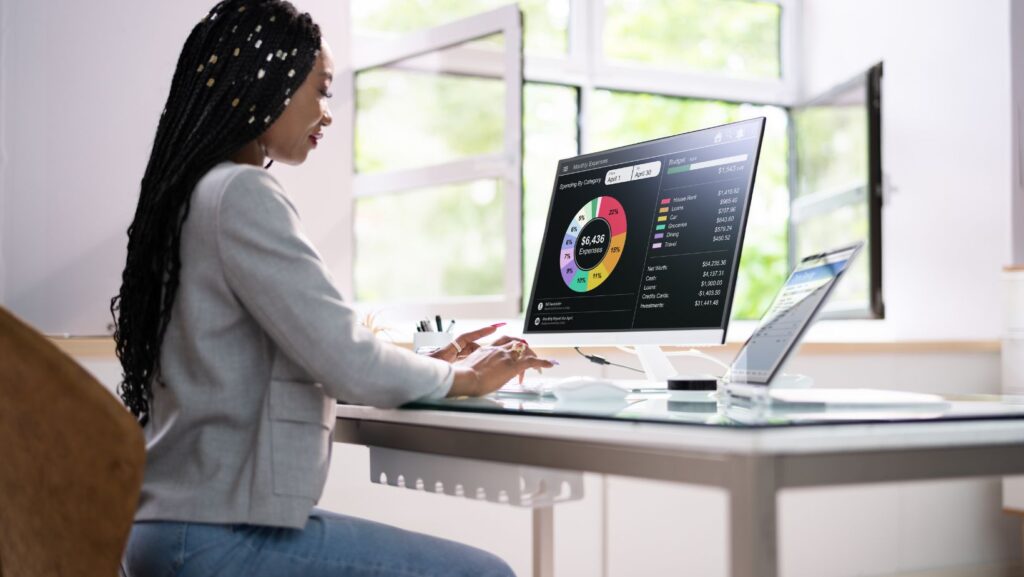
Working from home has become the new norm for many, blending the boundaries between personal and professional life. While it offers flexibility, it also brings its own set of stressors. From endless video calls to balancing household chores, the pressure can quickly build up.
Reducing stress while working from home isn’t just about managing time; it’s about creating a balanced environment that fosters productivity and well-being. Simple changes in daily routines and workspace setups can make a significant difference. Let’s explore some effective strategies to help maintain a stress-free work-from-home experience.
Understanding Stress In The Remote Work Environment
The remote work environment presents unique challenges that can significantly affect an individual’s stress levels. Identifying these stressors and understanding their impact is crucial.
Common Causes Of Stress While Working From Home
Unstructured Schedules: Lack of clear start and end times for work can lead to overworking, causing burnout.
Isolation: Limited social interactions may lead to feelings of loneliness and isolation, contributing to stress.
Distractions: Balancing household responsibilities with work can lead to constant interruptions, reducing productivity and increasing stress.
Technological Issues: Poor internet connectivity and frequent technical glitches can frustrate remote workers, elevating stress levels.
Work-Life Balance: Blurred lines between professional duties and personal life can make it challenging to disconnect, increasing stress.
Signs And Symptoms Of Stress
Physical Symptoms: Stress can manifest as headaches, muscle tension, or fatigue. Avoid back pain by maintaining proper posture.
Mental Symptoms: Anxiety, irritability, or inability to focus are common mental signs of stress in remote work settings.
Behavioral Changes: Changes in sleep patterns, overeating, or withdrawal from social interactions can indicate stress.
Eye Strain: Prolonged screen time can lead to digital eye strain. Reduce eye strain by following the 20-20-20 rule: every 20 minutes, look at something 20 feet away for 20 seconds.
Understanding these aspects can help in identifying and addressing stress effectively while working from home.
Creating A Productive Workspace
A productive workspace is essential for reducing stress while working from home. It involves selecting the right location, considering ergonomic factors, and minimizing distractions.
Choosing The Right Location
Selecting an optimal location promotes focus and productivity. Choose a quiet, well-lit area, away from household traffic. Ensure natural light is available if possible, as it enhances mood and reduces eye strain. A dedicated workspace helps create mental boundaries between work and personal life.
Ergonomic Considerations
Ergonomic setup prevents discomfort and injuries. Use a chair that supports the lower back to avoid back pain. Position the monitor at eye level to reduce neck strain. Place the keyboard and mouse at a comfortable height to minimize wrist strain. Consider using a standing desk to alternate between sitting and standing, promoting circulation.
Minimizing Distractions
Reducing distractions improves concentration and efficiency. Keep the workspace tidy and free from clutter. Use noise-canceling headphones to block out background noise.

Establish a routine and communicate work hours with household members to minimize interruptions. Implement techniques like The Pomodoro Technique to maintain focus and productivity.
Establishing A Routine
Creating a consistent daily routine can significantly reduce stress while working from home. Structured days lead to improved productivity and well-being.
Setting A Work Schedule
Establishing a fixed work schedule helps create clear boundaries between personal and professional life. Align work hours with the most productive times of the day. Use tools such as calendars and task management apps to stay organized and on track. Ensure to roughly follow the same start and end times each day to maintain a standard workflow.
Incorporating Breaks And Downtime
Regular breaks prevent burnout and maintain productivity. Consider techniques like The Pomodoro Technique, which involves working for 25 minutes followed by a 5-minute break. Incorporate longer breaks for meals and short walks to sustain energy levels. These intervals help reduce eye strain by allowing frequent rests and a change in activity.
Maintaining Work-Life Balance
Balancing work and personal life is crucial in a home setting. Designate specific areas for work to avoid back pain and ensure ergonomic comfort. Stick to set work hours and unplug from digital devices after hours to disconnect from work. Prioritize personal time for hobbies, family, and relaxation to maintain overall well-being.
Effective Communication Strategies
Effective communication is essential when working from home. It helps manage stress by ensuring clarity and fostering collaboration.
Staying Connected With Colleagues
Maintaining regular contact with colleagues aids in reducing feelings of isolation. Utilize tools like Slack, Microsoft Teams, or Zoom to hold virtual meetings and discussions. Schedule daily or weekly check-ins to keep everyone updated and engaged. Sharing calendars and availability helps coordinate tasks efficiently.
Setting Boundaries With Family Members
Clearly communicate your work hours to family members to avoid interruptions. Designate a dedicated workspace to signal when you’re unavailable. Use visual cues like a closed door or a sign to indicate you’re in work mode. Setting specific times for breaks using The Pomodoro Technique can help reinforce these boundaries and allow for uninterrupted work sessions.
Using Technology To Stay Organized
Leverage technology to streamline workflows and maintain organization. Use project management tools like Trello, Asana, or Monday.com to track tasks and deadlines. Digital calendars can help schedule meetings and prioritize tasks effectively. Convert documents between formats, such as convert PDF to Word, to ensure flexibility and ease in document handling. Implementing such tools reduces stress by providing structure and clarity in your work processes.
Healthy Lifestyle Choices
Healthy lifestyle choices play a crucial role in reducing stress while working from home. These choices impact overall well-being and productivity.
Importance Of Regular Exercise
Regular exercise reduces stress levels and boosts mood. Physical activity increases endorphin production, leading to a more positive attitude. For instance, a 30-minute daily walk or a quick at-home workout can help. Consistent workouts also help avoid back pain common in remote work settings.
Eating A Balanced Diet
A balanced diet keeps energy levels stable and enhances mental clarity. Nutrient-rich foods, like vegetables, lean proteins, and whole grains, provide sustained energy. Eating regularly and avoiding excessive sugar or caffeine intake prevents energy crashes.
Ensuring Adequate Sleep
Adequate sleep improves stress management and cognitive function. Aiming for 7-9 hours of sleep each night ensures proper rest. Creating a consistent sleep schedule and a relaxing bedtime routine enhances sleep quality.

Ensuring screen-free time before bed helps reduce eye strain and promotes better sleep.
Practicing Mindfulness And Relaxation Techniques
Incorporating mindfulness and relaxation techniques can significantly reduce stress while working from home. These practices not only improve mental health but also enhance productivity.
Meditation And Deep Breathing Exercises
Meditation and deep breathing exercises offer powerful tools to manage stress. Regular sessions of mindfulness meditation help center the mind. For instance, dedicating 10-20 minutes each morning to a guided session can reduce anxiety and enhance focus. Deep breathing exercises like diaphragmatic breathing are essential for quick relaxation. Practicing these techniques during short breaks can immediately lower stress levels, fostering a calmer work environment.
Taking Regular Screen Breaks
Regular screen breaks are crucial to avoiding stress and maintaining eye health. Implementing methods like The Pomodoro Technique can structure work periods with timed breaks, reducing eye strain and boosting productivity. For example, after every 25 minutes of focused work, taking a 5-minute break allows the eyes to rest and the mind to recharge. Using blue light filters and adjusting screen brightness can also mitigate eye strain during extended work hours.
Scheduling Fun And Relaxation Time
Integrating fun and relaxation time into the daily routine is vital for stress management. Scheduling activities such as brief outdoor walks, reading, or engaging in hobbies during lunch breaks provides a mental reprieve from work-related stressors. Additionally, setting aside time in the evening for family or leisure activities ensures work-life balance, contributing to overall well-being and productivity.
Conclusion
Reducing stress while working from home requires a multifaceted approach. By creating a structured schedule, setting boundaries, and leveraging technology, individuals can enhance productivity and well-being. Incorporating healthy lifestyle choices like regular exercise, a balanced diet, and adequate sleep further supports stress management. Mindfulness practices and regular breaks are essential for maintaining focus and reducing anxiety. Implementing these strategies can lead to a more balanced and fulfilling remote work experience, ensuring both personal and professional success.

